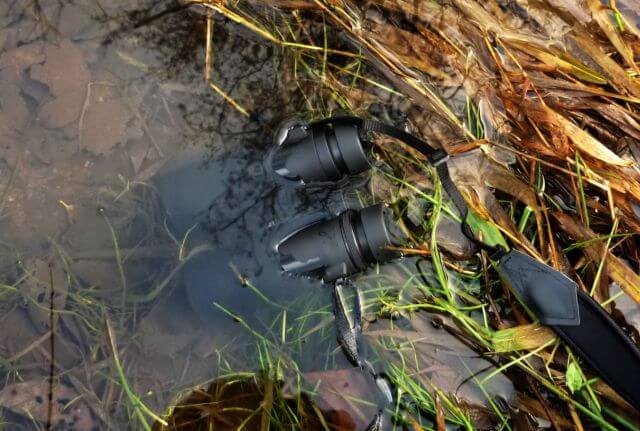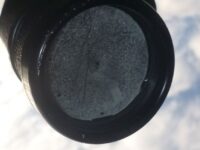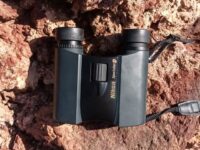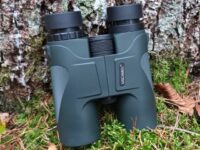Have you dropped your binoculars in the water? Annoying isn’t it? Are they waterproof? If you’re lucky, your binoculars are O-ring sealed and even filled with an inert gas. In that case, you have nothing to worry about because such models do not allow moisture to get in even when the binoculars are dropped in water.
If not, and your binoculars are only splash-proof, then it is likely that small amounts of water (or more depending on how long it was in the water) have penetrated. Anyway, even small amounts of moisture in binoculars are not good, and should be removed asap. But how to get water out of binoculars?
Why Water in Binoculars Is Bad
Water or just small amounts of moisture in binoculars are the enemies of the inner workings of optical instruments. It impairs the optical performance as well as the viewing comfort and will take out the fun of using the binoculars.
Moisture in binoculars may cause fogging of the lens surfaces or corrosion of the mechanical components and worst, it will promote the growth of lens fungus. Lens fungus destroys the coating on the lenses and makes the binoculars unusable.
Even small amounts of moisture can reduce the optical performance. On the way through the binoculars, the light has several glass bodies to travel through. When moisture condenses on the glass surface, the transmission is reduced. The result is darker, fainter images, and the increase in optical errors causes lower image sharpness and resolution.
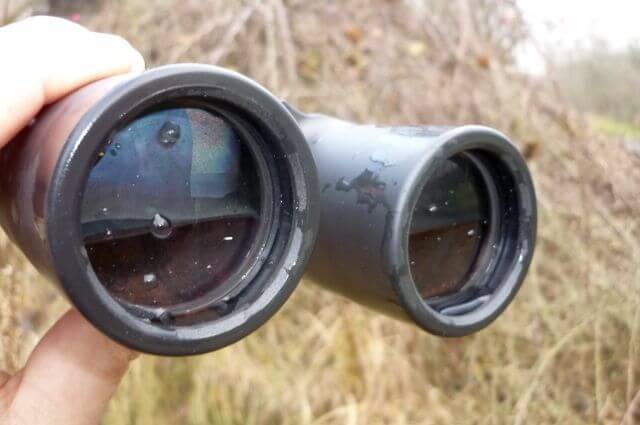
How To Get Water Out Of Binoculars
Water is not good for binoculars if it gets inside and even small amounts of moisture can be enough to ruin your binoculars. It reduces their lifespan and may force you to purchase new binoculars, but this time it’s best to buy o-ring sealed binoculars with at least IPX 7 rating.
But we don’t want to throw away the binoculars dropped in the water, we try to get the water out. Best of course if the thing does not fall into the water or the binoculars are waterproof then we can save ourselves the further steps.
Removing moisture from your binoculars
If it was just rain or you took the binoculars out of the water immediately before anything could get in, you were lucky. Simply wipe off the water on the outside of the binoculars with a clean, dry microfiber cloth. Put the binoculars in a warm dry place to dry before you put them away.
If you are not sure that water has not got into your binoculars and you want to be on the safe side, here are some things you can do to remove moisture from the inside of your binoculars.
Removing water from your binoculars is relatively simple and straightforward, as long as it has not been underwater for a long time to fill up completely.
With Porro prism binoculars, it’s best to unscrew the lens tubes and shake the water out.
Roof prism binoculars are not so easy to open up, those place upright and hope that the water is running out.
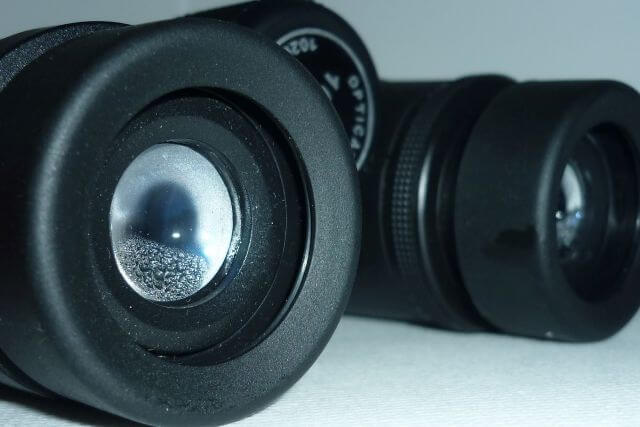
Put them in a warm dry place and wait
Small amounts of moisture will come out of the binoculars as they get in. After all, the problem is limited to binoculars that are not o-ring sealed. In those, there is always a little air exchange between the inside and the outside world.
So, just put the affected bino in a warm, dry place, perhaps near a source of heat, and wait a few days.
That’s all you can do for now, be patient. After a couple of days of drying in a warm place inspect the instrument if all of the moisture has gone. If so, fine.
However, if the binoculars still have water or little moisture inside, they will keep on fogging up d to move on to option two.
Use silica gel desiccant – this is effective!
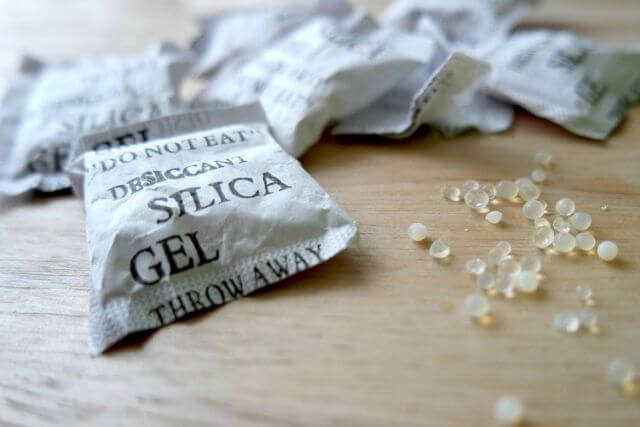
Remember the little bags of desiccant that come with so many new products? These little pouches contain silica gel. This stuff has the property that it can and will absorb very large amounts of water, thus it removes water from its surroundings. This works until it is saturated with water. Then you can regenerate it again by simply heating it up
You can also order desiccants online if you need larger quantities to keep things dry. Desiccants are great moisture absorbers and you can use it to dry all kinds of things, such as smartphones, cameras, watches, etc., whatever needs to be dried or protected from moisture when stored to prevent corrosion or growth of mold.
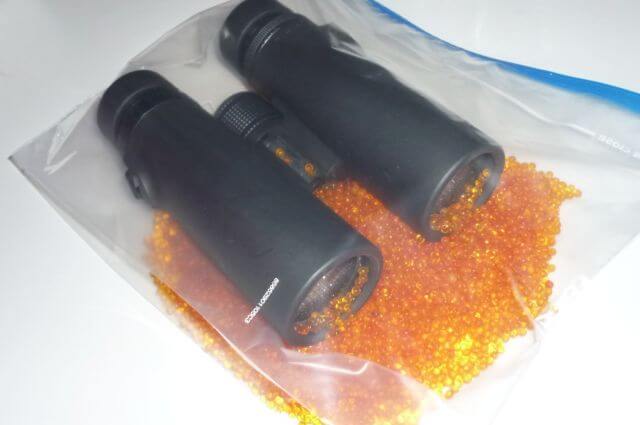
Back to the binoculars from which we want to get the moisture out. The simplest is to put the binoculars together with the desiccant in an airtight storage box (or a ziplock bag) and leave it there for a few days. The property of the desiccant to absorb moisture will have absorbed all water within a few days and the binoculars should be fine again.
So, now it’s patience, and wait and see. In a few days, we will check and hope that the silica gel has done its magic and has drawn out all the moisture from the binoculars.
This is in general a good method to store binoculars. If you don’t need the binos, always store them in an airtight box with a little drying agent so you don’t have to worry about moisture causing corrosion or mold to grow.
Preventing moisture and water from getting into binoculars
Preventing moisture from getting into binoculars is quite difficult as long as it is not waterproof binoculars. In those, O-rings are built into the housing, the barrels, and wherever moving parts are. These O-rings provide an environmental seal, that prevents the exchange of air and the transport of humidity into the inside of the binoculars. Even in the extreme scenario when the binoculars are dropped in water, moisture cannot get in.
But in the case of non-waterproof models, you simply have to expect that moisture might get in. It helps to be careful that you are not out in heavy rain for too long, or if, that you transport the binoculars in a waterproof bag. And binoculars must not fall into the water either.
When storing binoculars that are not in use, it is always a good idea to keep your optical instruments in a closet with a couple of pouches of silica gel. This provides a low humidity environment in the immediate vicinity of the binoculars.
Non-waterproof binoculars are actually not really recommended for someone who likes to spend a lot of time in nature and is regularly confronted with extreme weather conditions. Waterproof and O-ring sealed binoculars, maybe even filled with nitrogen or argon, ensure reliability and functionality in all situations. Fortunately, most good binoculars for bird watchers, hunters, and nature lovers have this feature.
